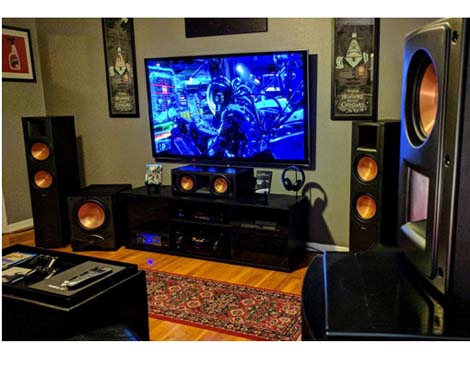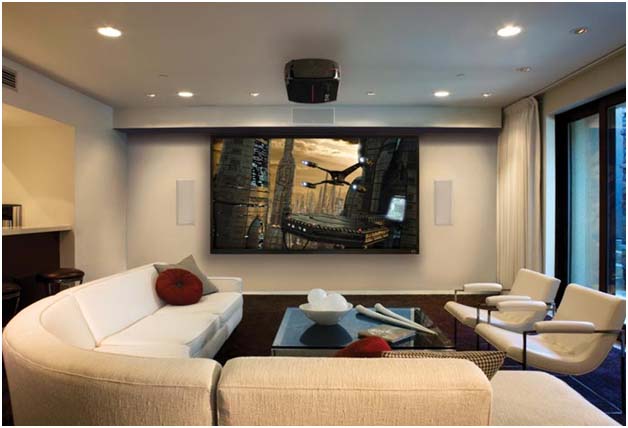Useful tips and cost saving advice to help you with your home theater project.

One Saturday night while out for dinner at a Thornbury restaurant, I was approached by one of my clients. I'd installed some good quality speakers in several rooms of the chalet he'd built in the Blue Mountains behind Collingwood for his family to enjoy ski weekends. He wanted to tell me that he had enjoyed the best morning that very day just sitting back and listening to his favourite music. He was amazed and appreciative at how good it sounded. You can imagine how pleased I was.
When he'd originally contacted me, he had wanted to know how to get the best sound while still being able to easily stream the playlists he and his family kept on smart phones and tablets. I'd explained that good sound is primarily about the speakers and the room. Streaming from your hand held music device to your home system is no longer a technical challenge. There are several audio-video receivers as well as stand-alone devices that can link your hand-held device to your system as it does to the computer, with Wi-Fi or Bluetooth. If good sound is really important it's still best to go old school, eschew the portable speakers that often come with wireless systems (plugged into electrical outlets) and go for properly installed built-ins that are carefully positioned and installed to work with the room. Especially if you're building new and can easily run cables.

This chalet was graced with a high sloping ceiling ascending away from where the speakers were to be placed. That's an ideal environment for good sound. We put in good speakers, built to be recessed in the walls and ceilings, and we enhanced their qualities by installing foam back boxes in the walls and acoustic cans in the ceilings. By trapping the sound that escapes from the rear of the speakers, there is a discernable improvement in sound reproduction. I'm sure that is part of what my client had been noticing that morning.
The pre-wire for a multi-room system was unusually simple. The amplifier was located centrally, connected to the Internet and controlled by tablets and smart phones. We ran a 2-conductor speaker cable from that central amplifier directly to each speaker location. The back boxes and cans were added before the drywall and the speakers installed afterward. Normally in a multi-room set up we would drop every speaker cable down the wall in a room where there were speakers, to allow for a volume control. For maximum flexibility in the future, we'd also run a couple of Cat 5 cables to the volume control location. This would guarantee that any present or future (hard-wired) multi-room control system could be used.
I had explained to the client the advantages of adding these additional cables. Not only would they allow for future choices, the presence of solid wire cable meant that signals could always get through no matter what the conditions. That is not necessarily something you can bank on with wireless transmissions. But he was looking forward to the twenty-first century of wireless everything and wasn't worried.
I am always trying to guess what changes are coming in home electronics. They happen in such quick succession it's an ongoing process to keep up. Systems and devices seem to become obsolete so quickly. When I think of this installation a decade from now, or longer, if the wireless system my client purchased has broken down for good, will a new system provide the same assurance of control? In the end, I decided, as he did, that Wi-Fi is here to stay and the chance of finding no system that can send control commands wirelessly seems a slim risk.
Having all of the controls in your hand-held device made it convenient. The family kept the tablet on a side table in the Great Room and they could call up any room on the menu, choose a selection or a play list, and set the volume level. We had also run a pair of outside speakers to the deck and it seemed pulling a phone out of your pocket was much more convenient than having to go to a wall-mounted control. In fact, most wall-mounted controllers come with hand-held remotes to provide that same convenience.
I had another concern. He made it clear from the start that he values sound quality and also that his tablet is his constant companion and sole source of music. When you buy a CD, or even a vinyl album, you are getting the sound quality provided by the producers and manufacturer, but when you download music you decide the sound quality. By now everyone in the digital age understands that you can compress the information to get more into less storage space, but you sacrifice quality, specifically when it comes to music, when you do that. There is an ongoing debate about the nature of the quality loss and how well it can be detected by most listeners. Two things I've learned from experience: 1) Perception of sound quality is so subjective it is impossible to predict how another hears it; and 2) The better the quality of the speakers and amplification, the more noticeable the flaws in the source material become. If the speakers performed as well as I hoped they would, and if my client was the audiophile he appeared to be, would the streaming bit rate of his original download provide less quality than he was hoping for?
When he came up to me at the restaurant, so happy with the sounds, it pleased me on several fronts. Any time I install a video or audio system, I hope to see the client get a real kick out of it. I was happy as well to have found a client who was interested in melding the convenience of wireless with the quality of built-in, and that he was so well pleased with the results.



















Your Message